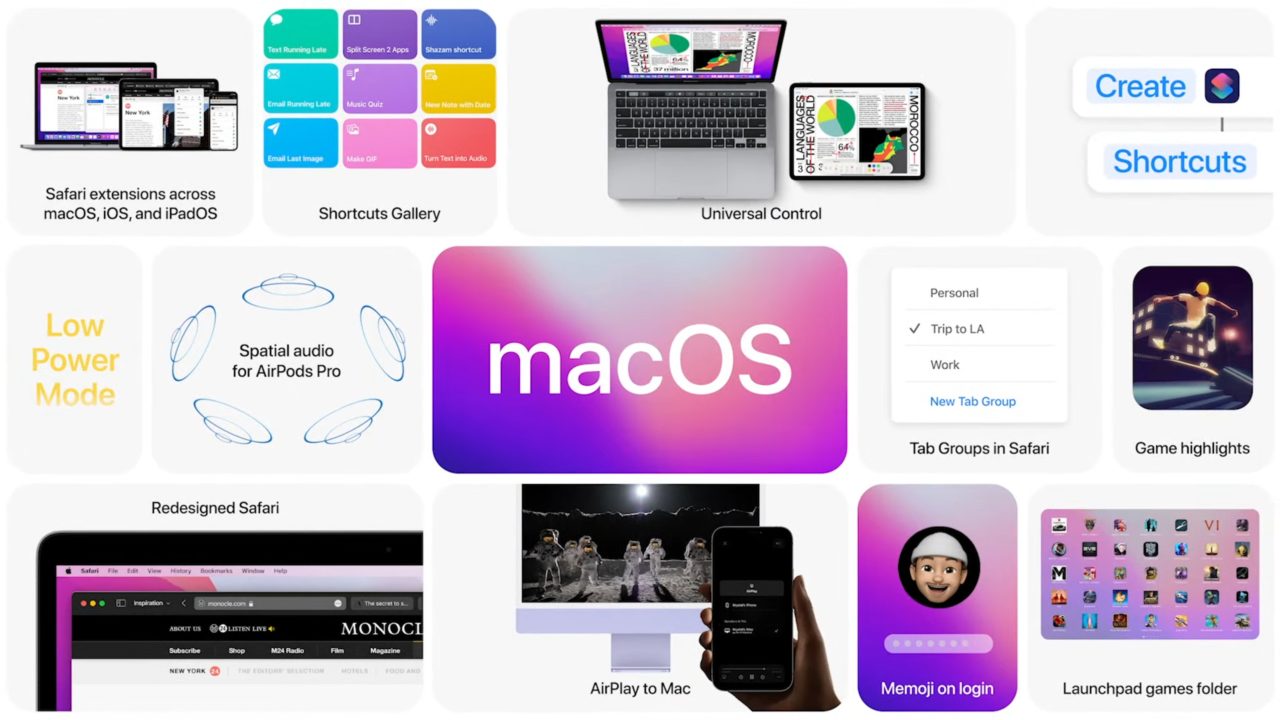

- MACFUSE MACOS MONTEREY FOR MAC
- MACFUSE MACOS MONTEREY INSTALL
- MACFUSE MACOS MONTEREY SOFTWARE
- MACFUSE MACOS MONTEREY CODE
- MACFUSE MACOS MONTEREY PLUS
MACFUSE MACOS MONTEREY INSTALL
First, you need to download and install macFUSE. If you need to reconnect to the shares just press the app and it will connect or reconnect. However, if you are using MacOS Monterey, especially if you have a Mac with an Apple M1 chip, you will need to install macFUSE and then the Quobyte client. If you need to reconnect to the shares just press the app and it will connect or reconnect.įor additional folders you must create the destination folder like - mkdir ~/o2homeĪfter it is working you can add a shortcut into your dock by navigating to /Users/Shared/ on your Mac open /Users/Shared and then dragging the sshfs_nfs.app into your dock. sshfs_mounts then edit in textedit.app.Īn example REMOTE_FOLDER LOCAL_FOLDER | empty local folder must exist /nfs/userdocs /Users/oconnor/userdocs /home/myfolder /Users/oconnor/o2homeĪfter it is working you can add a shortcut into your dock by navigating to your home folder on your Mac open ~ and then dragging the sshfs_nfs.app into your dock. You can add or change any number of mounts that sshfs-helper.sh. The script will create a file in your home folder called. If the mounts become stuck just rerun to reattach shares.

The app is simply a wrapper for sshfs-helper.sh and assumes the script exists in your home folder.
MACFUSE MACOS MONTEREY FOR MAC
We created a 'helper' script available that can be used with sshfs_nfs.app for mac to automount at login. On occasion the mount may become stuck or unresponsive you can force unmount via -ĭiskutil umount force /Users/oconnor/userdocs Using helper script If you are using an key-based-ssh you would add it's path to the IdentityFile paramater - adding ,IdentityFile=$HOME/.ssh/id_rsa to the end of the line. We give the volume a name volname=userdocs (shows mount point on your desktop), add some additional options for server connections, etc. You should mount one complete filesystem from the remote site, so this would be anything listed in /nfs for example.

usr/local/bin/sshfs /Users/oconnor/userdocs -o volname =userdocs,reconnect,ServerAliveInterval =15,ServerAliveCountMax =3,idmap =user,auto_xattr,dev,suid,defer_permissions,noappledouble,noapplexattr OS X (Mac) helpful hintsĪs of OSX 10.15 Catilina we are not recommending to create mounts in the root path or / of the file system.Īn example of mounting from OSX on your local system is as follows - mkdir ~/userdocs Just remember to specify the PATH to the directory. You should mount sshfs via a directory in your home directory. Schl15 as a host to access the directory /nfs/userdocs/ps/meyer (in other
MACFUSE MACOS MONTEREY PLUS
This is simply the latest iteration with MacFUSE (4.2.4) on macOS Monterey (12.2.1) on an Apple M1 (Max) chipset, plus a bit on using it with sshfs. It seems that each time Apple releases a new OS version, there are challenges in getting MacFuse installed.

MACFUSE MACOS MONTEREY CODE
The filesystems repository contains source code for several exciting and useful file systems for you to browse, compile, and build upon, such as sshfs, procfs, AccessibilityFS, GrabFS, LoopbackFS, SpotlightFS, and YouTubeFS.Sshfs Setting up sshfs on OS X (Mac) systems If you prefer another language (say, Python or Java), you should be able to create file systems in those languages after you install the relevant language bindings yourself. It comes with C-based and Objective-C-based SDKs.
MACFUSE MACOS MONTEREY SOFTWARE
The macFUSE software consists of a kernel extension and various user space libraries and tools. Therefore, many existing FUSE file systems become readily usable on macOS. It provides multiple APIs, one of which is a superset of the FUSE API (file system in user space) that originated on Linux. In more technical terms, FUSE implements a mechanism that makes it possible to implement a fully functional file system in a user-space program on macOS. Since FUSE file systems are regular applications (as opposed to kernel extensions), you have just as much flexibility and choice in programming tools, debuggers, and libraries as you have if you were developing standard macOS applications. Writing a file system using FUSE is orders of magnitude easier and quicker than the traditional approach of writing in-kernel file systems. The content of these file systems can come from anywhere: from the local disk, from across the network, from memory, or any other combination of sources. Legacy MacFUSE file systems are supported through the optional MacFUSE compatibility layer.Īs a developer, you can use the FUSE SDK to write numerous types of new file systems as regular user space programs. MacFUSE allows you to extend macOS's native file handling capabilities via third-party file systems.Īs a user, installing the macFUSE software package will let you use any third-party FUSE file system.


 0 kommentar(er)
0 kommentar(er)
